Well, gentlemen, we continue to talk about plant-like organisms. And this time the brown algae became the hero of my post. In general, they, along with diatoms and some other taxa, are now attributed to the kingdom of Straminopila, and it turns out that these are not plants at all ... But their classification is a complicated and muddy business, and still there are misunderstandings. Therefore, their taxonomic position relative to green plants, we will not particularly discuss, let the scientists-taxonomists have a headache about this.
Fig. 1. Thickets of brown algae on the coastal shoal.
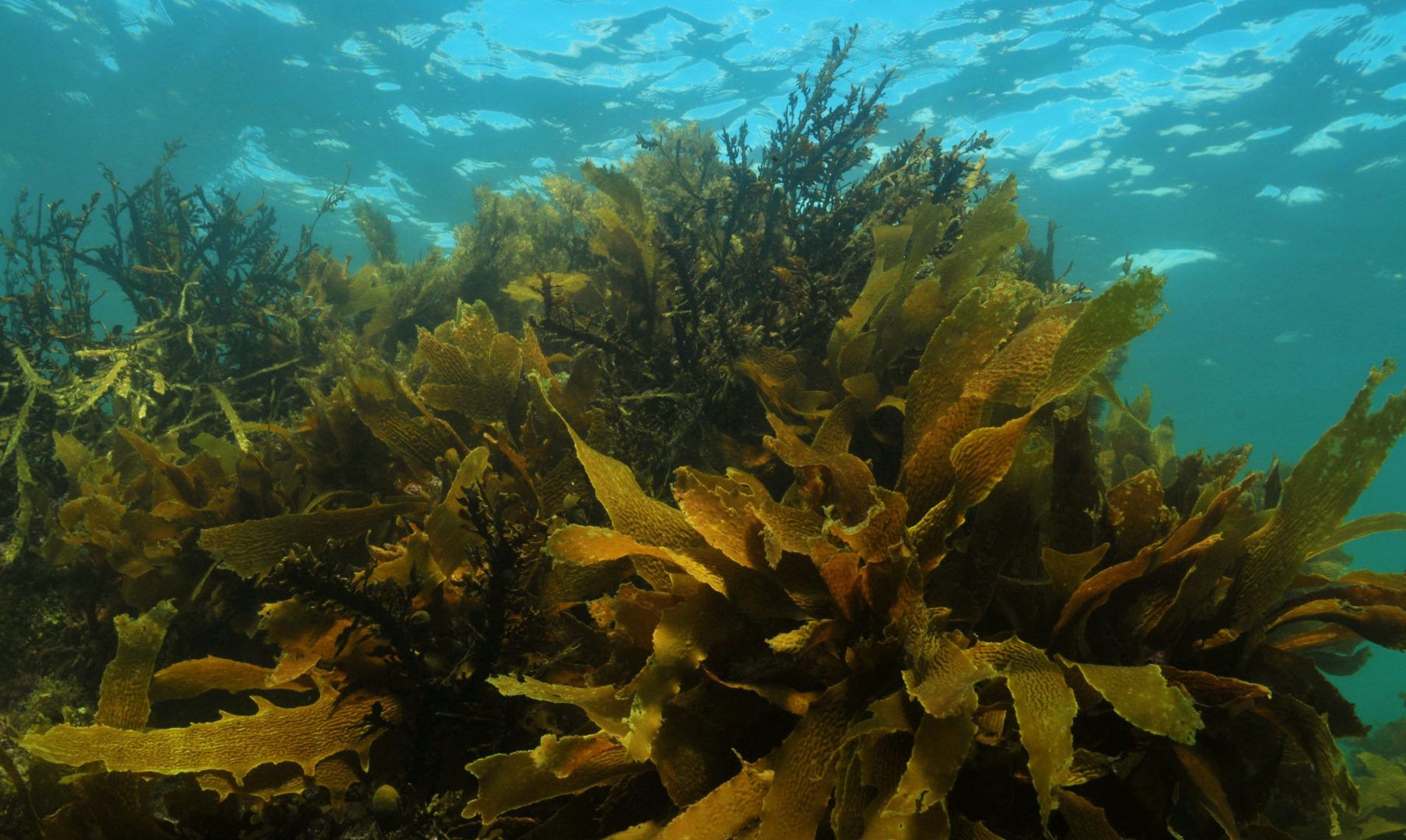
On their physiological and cytological features, we also will not be obsessed for a long time. I will only say that they have three-membrane chloroplasts, and the capture of light rays is produced by fucoxanthin and violoxanthin, which give the algae a distinctive brown-gray color. Due to the fact that the absorption peaks of these pigments are shifted towards yellow and green, brown algae can not settle at great depth. Their working level is from 0 to 70 meters below sea level, and below 100 meters they do not settle at all - they simply can not survive because of the lack of light.
The life cycle of these organisms is much simpler and more understandable (Figure 2). The main stage is a large diploid sporophyte, which, in fact, is an adult plant. In his sexual cells - zoosporangia - through multiple division and subsequent meiosis, many haploid zoospores of male and female are formed. Each zoospora has a pair of flagella and is able to move independently. Why the flagella two - I can not say. Apparently, the second was taken away from the purple.
Fig. 2. Life cycle of brown algae on the example of sea kale.
Zoospores find a suitable place and grow into small gametophytes, male and female. Men produce a lot of spermatozoa (by the way, they are also double-gland in brown algae), and women grow a large egg on their bodies. After fertilization with the spermatozoon, it begins to actively divide and eventually a new large sporophyte grows out of it. The gametophyte either dies or becomes its appendage.
Thallus (body) of brown algae is very difficult to organize, and in terms of organization level it approaches higher plants. It is divided into two parts - the root department, which serves as an anchor, and the runaway department, which is a stem with false leaves. Inside it there is even a semblance of a conducting system, so that water and substances dissolved in it can quickly move through the body of the plant. In large species, special vesicles are formed on the false fossils, which give the algae buoyancy.
All these features allowed us to win the leading algae in the ocean. They can reach gigantic proportions and form dense underwater forests along the coast, stretching along the coast for hundreds or even thousands of kilometers (Figure 3). These pockets of life provide shelter and livelihood for a huge number of different living organisms.
Fig. 3. Underwater forest formed by macrocystis thickets.
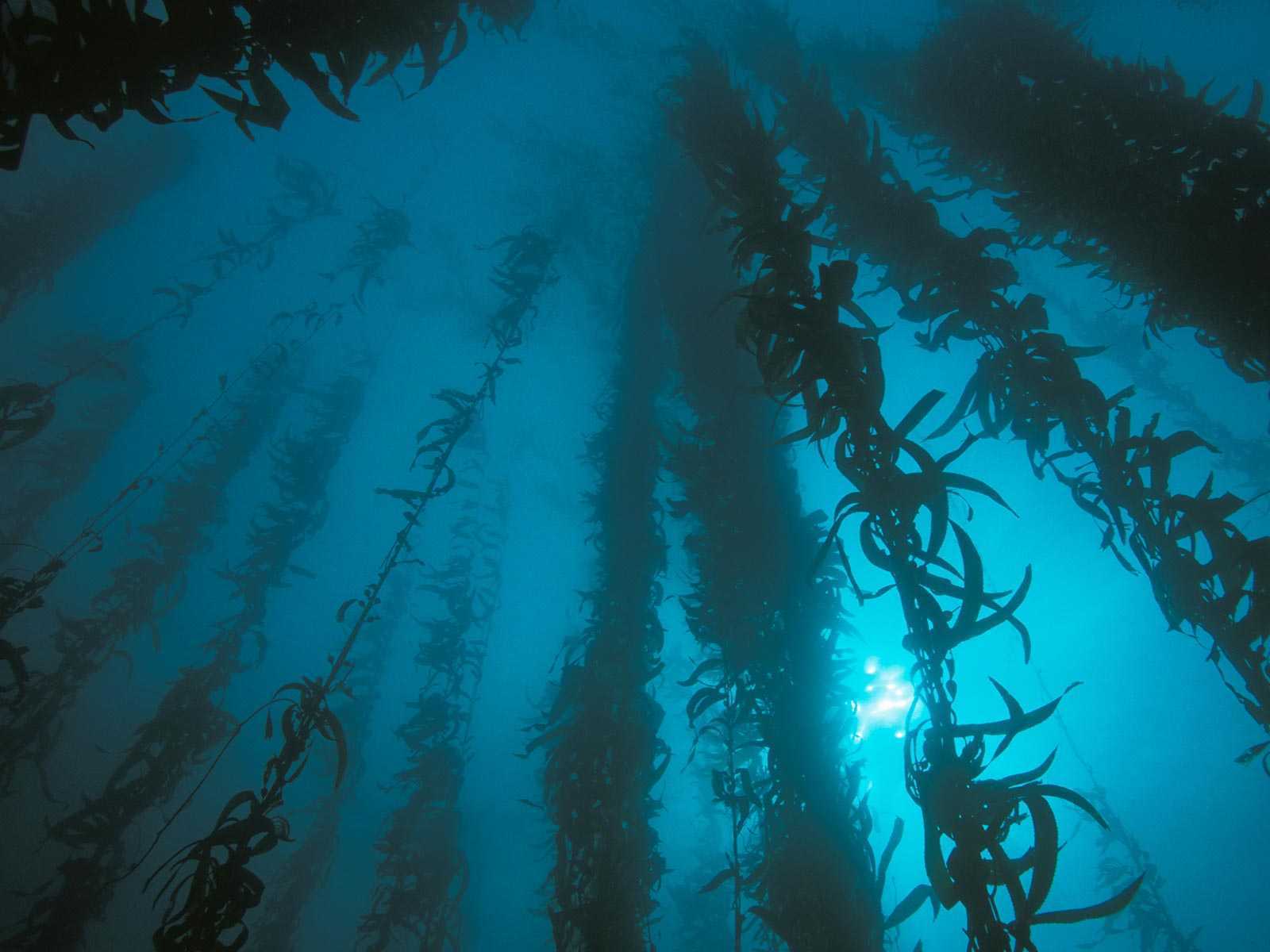
Especially in this succeeded algae of the genus macrocystis (Macrocystis). They are attached to the bottom by the lower root-like part. The main thallus is represented by a thick stem, from which grow flat ribbon-like false folds, and at their base there are bubble-floats lifting the plant upwards so that it can catch as much light as possible (Figure 4). The diameter of the floats can reach more than 20 cm (Figure 5), and the total length of the body is more than 100 meters. Thanks to the advanced transport system, the minerals absorbed by the lower cells and the photosynthesis produced at the top are uniformly distributed throughout the alga organism. Thus, all the cells in the thallome receive a good profit. Not what we have on the platform ... So, it seems I'm distracted.
Fig. 4. Macrocystis close-up. Floats are clearly seen in the bases of ribbon-shaped broad false leaves.
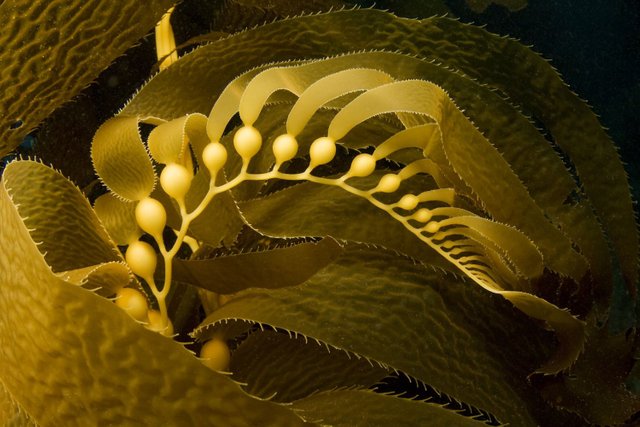
Fig. 5. A giant float on one of the lower leaves of an adult macrocystis.
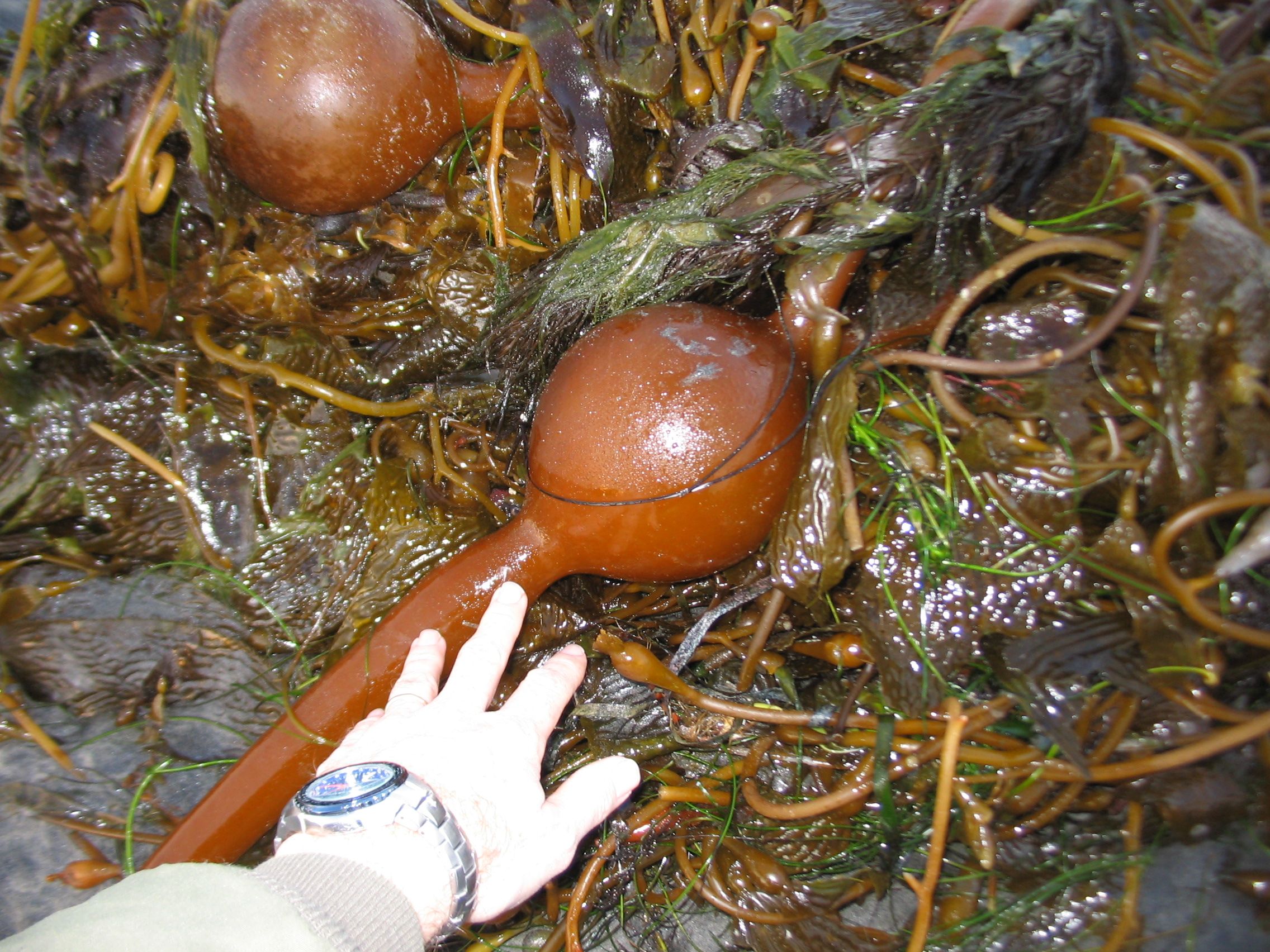
Another living marine attraction is the sargassum algae, or sea grapes (the genus Sargassum) (Figure 6). Its name was given to this living organism because the air bubbles, due to which it keeps at the surface, are very similar to soft juicy berries.
These algae grow along the coasts at shallow depths and have one amazing feature. Being detached from the ground, they do not perish, but continue to live and grow, multiplying vegetatively. This can last for months and years. Eventually, sea currents knock off such detachments into large floating islands, forming giant sea meadows in the area (Figure 7). From a long time until now, these clusters pose a huge problem for navigation, since ships often fail to overcome such masses of algae and may be stuck among them.
Fig. 6. Appearance of sargassum.
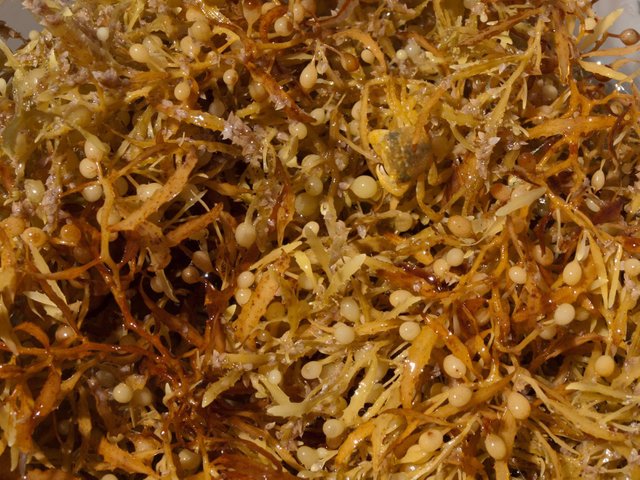
Fig. 7. A small sea meadow from algae. There are also congestions many times greater.
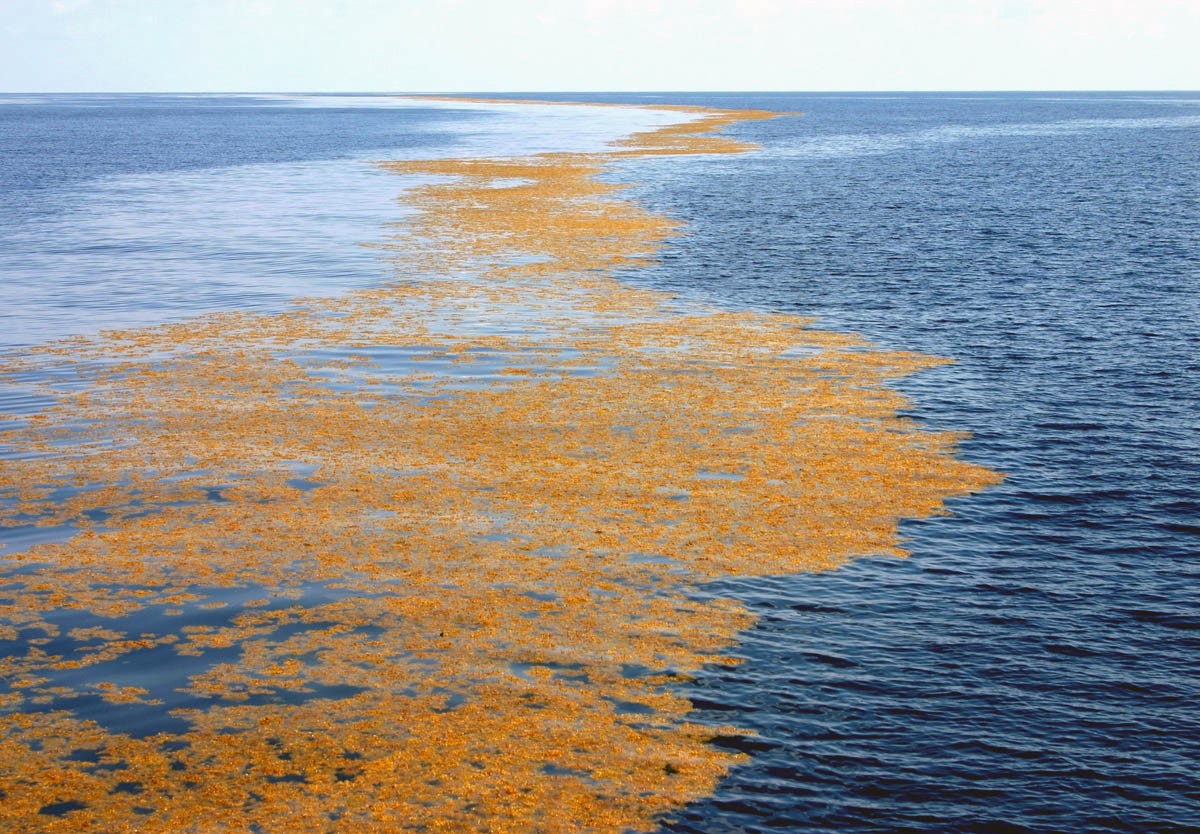
Finally, I can not fail to mention the well-known kelp. Yes, this is what we call seabuckthorn (Figure 8). This living organism is an important food product in the coastal regions of Asia. There, kelp is grown on huge marine farms. The technology of growing, I must say, very, very hard (perhaps, I'll write a separate post about this). But all labor costs justify themselves - after all, the output is something delicious and very useful. This seaweed is eaten fresh, dried, boiled, fried, canned and even makes flour out of it. They know laminaria not only in Asia, in our Europe this product is also very popular. Especially it is recommended to use it for people suffering from iodine deficiency. Who among us did not eat canned sea kale?
Fig. 8. Laminaria on the bottom of the sea.
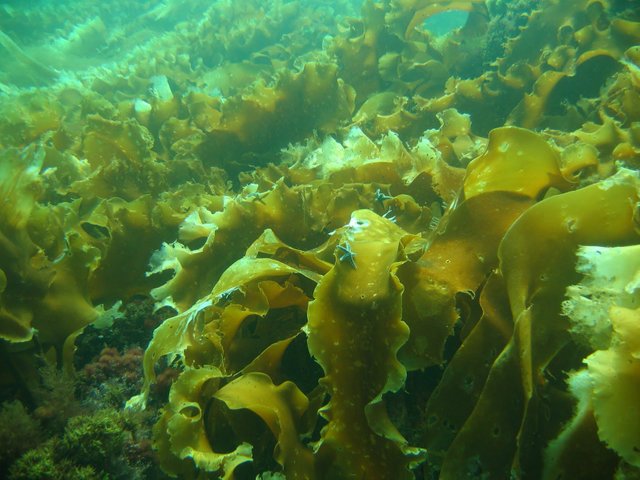
And, yes, I will. According to new research, it is not plants. Oddly enough, in terms of their structure and cell features, they are closer to the mushroom-like organisms, called sludge cells (well, we've already begun to involve the fungi here). This fact seems very surprising, right? But it's time to get used to the fact that nature is not like people. Vaughn, the euglena alga, which I wrote about a month ago, and looks more like a little animal with its habits ...
Nice. good picture of the plants !
Downvoting a post can decrease pending rewards and make it less visible. Common reasons:
Submit
Thank you!
Downvoting a post can decrease pending rewards and make it less visible. Common reasons:
Submit
no problem. These pictures are just great! :)
Downvoting a post can decrease pending rewards and make it less visible. Common reasons:
Submit